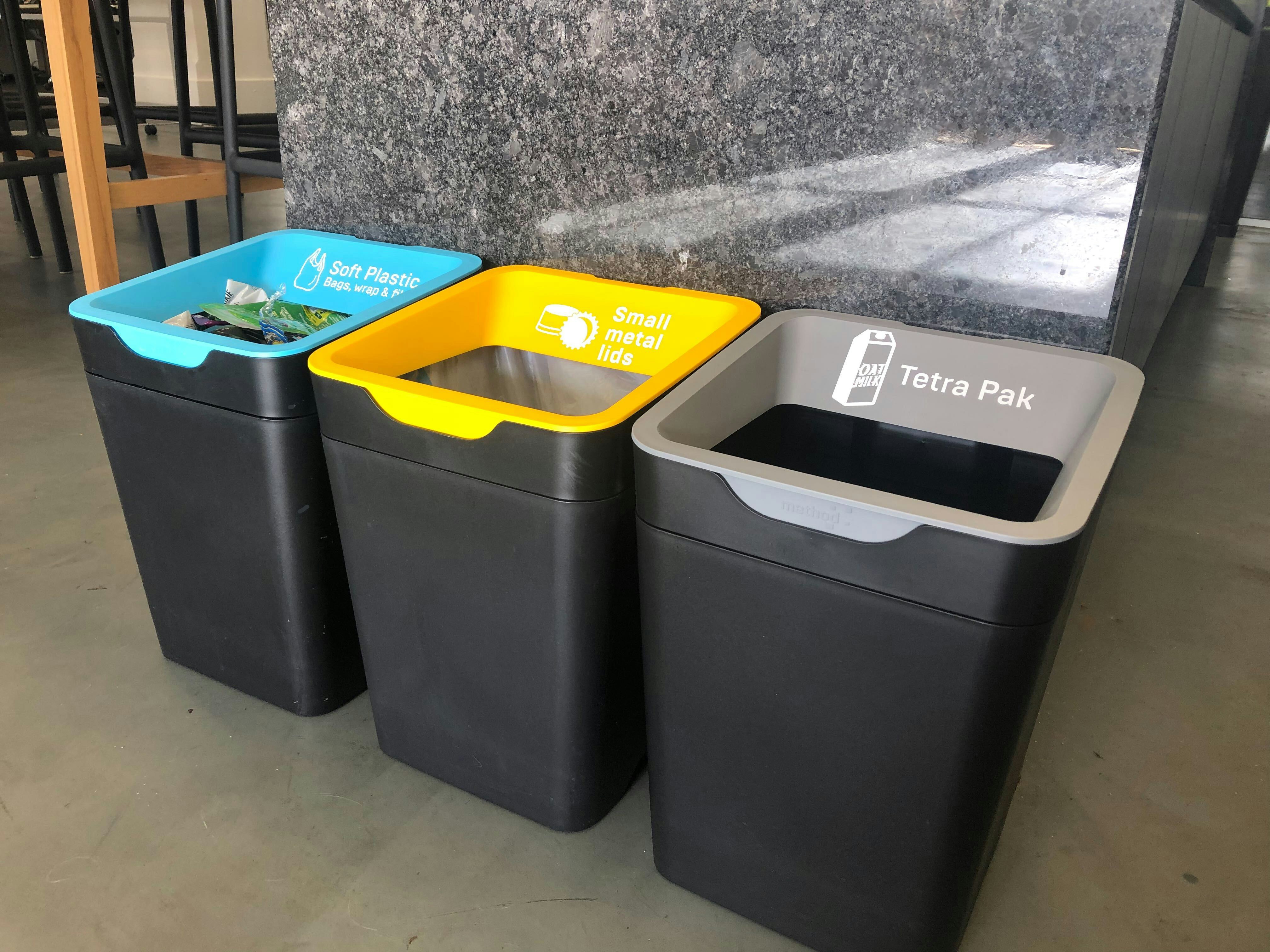do you want to view
5 Ways to Take Your Company's Recycling from Good to Great
Strategies for Improving Your Workplace Recyling
The fundamentals of your workplace recycling program – bins and signs – are in place; you’ve communicated with your team and maybe even set some recycling goals. These are instrumental to a successful recycling system, which is good, but you’re here because you want to be great. Thankfully we’ve got five of the best ways to take your company’s recycling from good to great.
1. Complete A Waste Audit
Whenever a company comes to us wanting to improve their waste systems, we always highly recommend a waste audit. A waste audit is an in-depth survey of all waste produced within your workplace. It will tell you exactly how you’re doing regarding waste management. This is especially important if you have clear waste diversion goals or are looking for a baseline before implementing changes. It will make it easier to set goals and improve if you have good, precise data.
Additionally, a waste audit will help you understand common contaminants in your workplace and where there may be an education gap within your organisation. Knowing these common problems will allow you to address them head-on and find solutions to improve, such as through increased signage.
You can either complete a waste audit in-house or hire a waste consultant to undertake a comprehensive examination of your system. Depending on your organisation’s needs, you may not need an external waste audit, but it will be more comprehensive overall.
2. Add More Waste Streams
Another reason a waste audit is important is that it can help you determine what other waste streams your organisation may benefit from. For example, if you only have one or two waste streams, you should consider adding additional ones to make your waste management more efficient.
There are many different streams you could adopt, but organics and additional recycling streams are the best ones to start with. Those are common waste sources within an office and are usually the easiest to find waste haulers for. If you already have those, you can get even more advanced by adding soft plastics, e-waste, container deposit schemes, coffee cup recycling or other location-specific waste.
Adding more streams means that more waste will be diverted to the specific places it needs to go. You may need to engage with community projects or providers outside of your standard waste streams for the less easily recyclable materials, such as tetra paks. Or coordinate with your suppliers to see if they have end of life solutions. It means less contamination for recycling providers and helps move your business to be more circular-thinking.
 A few of the unique waste streams at the Method office
A few of the unique waste streams at the Method office
3. Increase Staff Engagement
Having good bins and signage is vital for recycling, but without strong staff education, it may not be successful as you hoped. While you may get a lot of “wish-cycling,” your team may not fully understand what can and can’t go into the bins. This leads to contamination, which, depending on your location, may even lead to fines. Recycling is a complicated process, and your staff will need the education to use the system properly. It also helps engage the team regularly through fun events, educational opportunities, and regular communications.
Getting staff engagement up will help take your recycling to a whole new level and reduce contamination. Make it effective by hosting competitions, communicating regularly about progress, or finding other incentives to ensure your organisation is participating and doing it correctly.
4. Make Recycling Part of your Onboarding Process
If you’ve introduced a new system into a workplace, it’s crucial to get all staff up to date on what the system entails. For any new additions to the system, it’s also essential to communicate these early and often to keep everyone on the same page.
Having a sustainability onboarding will be crucial for all new hires. This should include an overview of the recycling system and what can and can’t be recycled. It should also go over company-wide sustainability goals and any other sustainability initiatives in your workplace. You can even gift new employees with a zero-waste kit to get them started on their sustainability journey. Communication these priorities early on in their career progression with your company mean they will be conscious from the beginning about their waste habits.
 Zero-waste kits we present to all new Method employees
Zero-waste kits we present to all new Method employees
5. More to More Sustainable Procurement Practices
While working to properly recycle the waste you already have, consider the waste entering your workplace. Are there ways you can reduce or eliminate sources of waste altogether? For example, can you shift to more recyclable materials in your workplace?
Adopting sustainable procurement practices in your workplace should help lower the amount of waste you produce each year. Have conversations with your suppliers about their materials and supply chains and find alternatives if they don’t offer them. This can include everything from paper products to new technology your office needs. By choosing options that consider the supply line and end of life for a product, you can keep more things out of the landfill and participate in a more circular economy.
Even if you already have recycling goals in place, there is always room for improvement. However, by implementing any of these five strategies above, you can improve your recycling and make your workplace more sustainable. With all this in mind, now is the time to consider bigger goals: Can your workplace be zero waste?